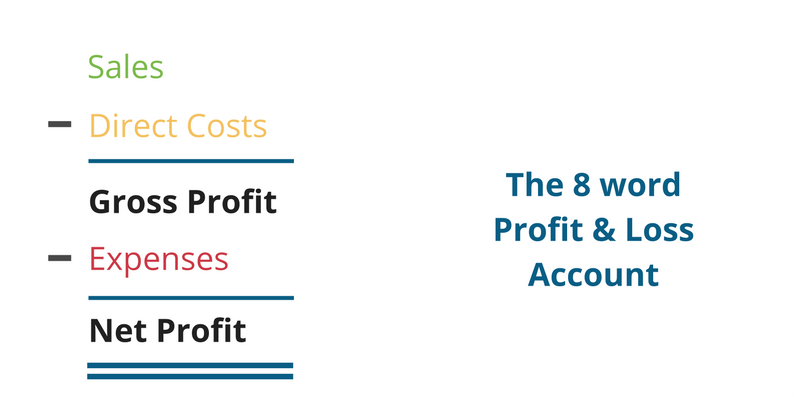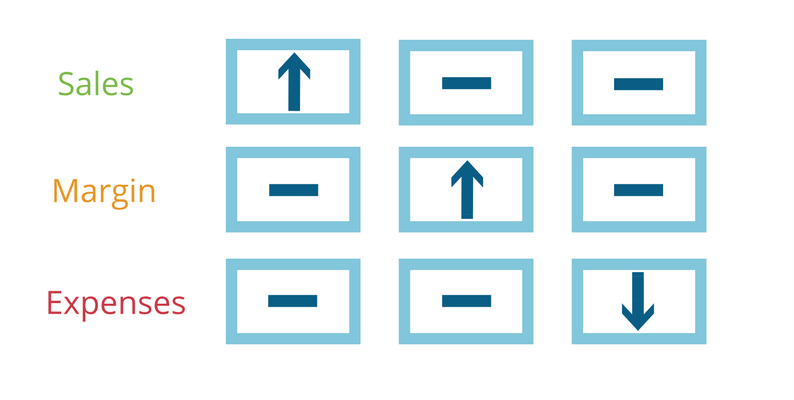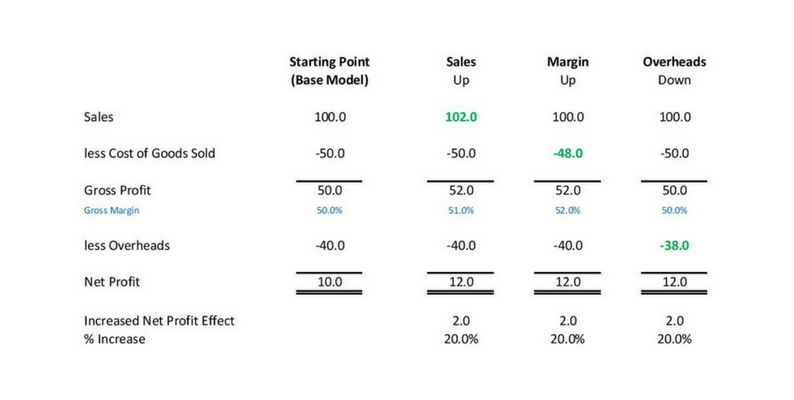
How To Increase Profit In Your Business In 3 Easy Steps
HOW TO INCREASE PROFIT IN YOUR BUSINESS IN 3 EASY STEPS
A profitable business is what we all crave. As entrepreneurs and business owners, enough is never enough. How to increase profit in our businesses becomes a skill that we have to become adept at – fast!
What we do know is this :
We hustle hard to earn profit, when what we actually want is a neat and simple system to help us increase profitability in the most efficient way possible. So that is exactly what we’re going to demonstrate here – how you make your business more profitable by applying 1 simple, universal concept.
We’re going to see that there are only 3 things that will ever influence how to make a business more profitable, and we’re going to see why the system holds true for anyone looking to create a very profitable business.
[ctt template=”11″ link=”956XK” via=”yes” ]There are only 3 things that will ever influence how to make a business more profitable[/ctt]
You might be wondering at this stage:
- Will this work for my business?
- Will it be difficult to understand?
So let’s answer those two questions now:
This will work for any business, regardless of:
- Geography – it doesn’t matter where in the world the business is located
- Size – turnover, staff number or office size (office, ‘factory’ or home based)
- Whether the business is product or service based
The actual concept around how to make a company profitable is as simple as it gets:
It is essentially based around 2 images that you need to remember (no numbers!)
We’re going to outline how building a profitable business needn’t be as tough as we had come to think. The 3 easy steps will provide you with a ‘skill for life’ that you can take into any business that you ever start or are involved in – it will show you how to create a profitable business, and diagnose where the profit is leaking.
So how can a business increase profit?
We need to start with a basic understanding of how to make profit in business:
At it’s simplest level, a business will make a profit if its revenue is greater than its expenses.
This is normally summarised in a ‘profit and loss account’. Whilst you may ordinarily be used to seeing a whole bunch of numbers on a page as presented to you by your accountant, it can actually be broken down into 8 words…well 7 actually as one of them is repeated – see it’s easier already ?
Let’s take a look at it in image format (no numbers required here, it is the principle that we need to understand):

The 8 word Profit and Loss Account
Before going any further we need to make sure that we have a clear understanding of the words used in the image above:
- Sales – Also often referred to as ‘turnover’ or ‘revenue’
This is the amount invoiced to clients for your goods or services
- Direct Costs – Also often referred to as ‘Cost of Goods Sold’
These are the costs that relate specifically to a sale – this typically can include a ‘direct labour’ element as well as a cost attributed to materials, or production costs
- Gross Profit – This is a calculation and is expressed as an amount
Sales – Direct Costs = Gross Profit
- Gross Margin – This is a calculation and is expressed as a percentage
Gross Profit / Sales = Gross Margin {where ‘/’ means divided by}
The Gross Margin expresses the amount of Gross Profit earned as a percentage of Sales. {This allows us to track and compare our gross profitability from month to month / quarter to quarter / year to year etc on a comparable basis (so that as we grow our businesses we can ensure that we are not becoming less profitable, or less efficient about how we make that profit}
- Expenses – Also often referred to as ‘overheads’.
These are the ‘everyday’ expenses incurred in the running of the business, that do not relate specifically to a sale. Examples would include rent, utilities, travel, bank charges, stationery etc
- Net Profit – This is a calculation expressed as an amount
Gross Profit – Overheads = Net Profit
That’s it. All the classic ‘complex accountant speak’, all the ‘but I’m not a numbers person’ commentary – 8 words in a picture. Earning a profit in business is about that image.
But it gets better:
These 8 words are all that we need to tell us what the 3 easy steps are going to be – I call them the 3 #profitlevers:
- Sales
- Margin
- Overhead
That’s right, this is all we need to tell us how to make a business more profitable. Want to see how to increase profit in business with just these 3 words? At the end of the day, we want to make business easy, don’t we?
How to increase profit and run a profitable business
We’re always on the lookout for simple ways to do things, especially when we feel out of our comfort zone (and many business owners and entrepreneurs don’t feel comfortable with ‘the numbers’, so know that you’re not alone if that’s you ?). We want to find the techniques that resonate and are easy to grasp – we need to make business as simple as possible. Running a profitable business is no different…and here’s the proof of just how straightforward it can be…
We take our three #profitlevers and we line them up as follows as outlined in the diagram below:

The 3 #profitlevers – preferred direction of movement
So if we are looking for ways to improve business profitability, we need to focus on these three areas – sales, margin and overhead. These are the only 3 things that will ever increase profitability. Moreover, each single element can improve profit if we focus on it and taking the right actions appropriate to that #profitlever. We’ll take a look at how to maximise profit in business a little later.
Let’s break down that image above and check through the logic:
- If we increase our sales, whilst keeping our direct costs and our overheads at the same level, we will make more profit
- If we decrease our direct costs (ie increase our gross margin), whilst keeping both our sales and our overheads at the same level, we will make more profit
- If we decrease our overheads whilst keeping our sales and direct costs at the same level, we will make more profit
This is the single image and concept that every business owner and entrepreneur needs to keep at the forefront of their mind when trying to make your business more profitable – it doesn’t get any more complex than that.
This image will become your profitability compass:
When you’re short on profit, or need to proactively generate more profit, this is the go to model. It is the simplest model to understand, and it makes it easy to implement because we can break things down into simple strategies and tactics against each #profitlever which will keep us more focused on the task at hand – which in turn will help us to achieve our business and profit goals!
Let’s see the theory put into practice:
We can see from the example below, that just by changing each #profitlever (Sales, Margin, Overhead) by ‘2 units’ we can improve profit by 20% in this particular business model. A 20% uplift for such a small change is an amazing return.
It also helps us draw three conclusions:
- Increasing the profitability of a business can be done using a very simple concept
- A small change in the right direction for any one of the #profitlevers can have a dramatically positive effect on our profit, proving the fact that we don’t need to over-complicate things to create a high profit business.
- The concept and the maths is so straightforward, anyone who considers themselves to not be a ‘numbers person’ can see that this is not difficult to understand – consequently, there is no reason to hide from it any more!

The disproportionately positive profit effect of small changes to each #profitlever
Here’s how to make your business more profitable
Step 1 – Sales
- Review your current sales and break them down into sales channels (type of client / customer etc) that you sell to, or into product and service types
- Consider how you could increase the sales any one of those categories
- Put your sales plan into action
Step 2 – Direct Costs & Expenses
- List out all of your expenses into simple categories (I tend to use the following as a guide – admin wages and support, rent & rates, utilities, banking & finance charges, office costs including stationery, postage etc, premises expenses, professional and consultancy fees, travel & subsistence, phone and IT costs, marketing)
- Now take that list and isolate any costs that are direct costs (ie relate directly to a sale, eg manufacturing or production costs, any labour cost that is dedicated to sales specifically (could be a sales rep, could be an ‘installer’ etc), and marketing costs that are dedicated to a sale (eg Facebook advertising costs as part of a sales funnel that leads directly to a sales page)
Step 3 – Review & Implement
- Take the overheads listing first and review to see where you could reduce any expenses. Remember your objective here is to recognise the expenditure which is not adding to the effectiveness of running a profitable business – it is likely for example that there are subscriptions being paid for that are not being used (surprisingly common), along with other costs where expenditure has been ‘discretionary’ rather than ‘necessary’.
- Remember not to discount reviewing any area – remove the costs that are unnecessary – or at least recalibrate them. The cumulative savings will add up. For example, you only need to save $50 on $2,500 of expenditure every month to recognise a 2% decrease – that’s worth $600 of extra profit every year…
- Now review the direct costs and determine where you could make some savings – could you ask a supplier to reduce their prices by 1%? Could you pay closer attention to your Facebook advertising metrics to see where you might be wasting some money on adverts that aren’t converting? You could save 2% ($0.40) on a $20/day ad spend ($600/month total spend) just by stopping an underperforming ad one day sooner than you normally do, perhaps (ie get closer to the analysis piece sooner and make the decision!)
Steps – Summary & Comment
You can see that the key to all of the steps above is breaking things down into manageable pieces. This makes it easier for us to focus on how to improve net profit, because we can take a series of smaller but more focused actions to create a positive cumulative effect. Unfortunately this does mean that you have some work to do initially, but your bottom line will thank you for it for ever more!
How to maximise profit in business
Following on from what we have already seen above, extending the logic of the concept we can increase profit most effectively when we move all three of the #profitlevers at the same time, ie we will develop and work with each one of the #profitlevers as individual strategies, but we can run all three strategies at the same time so that we can create the following scenario:
Increase sales, decrease direct costs (increases gross margin), decrease overheads
[ctt template=”11″ link=”9dl44″ via=”yes” ]Increase sales, decrease direct costs (increases gross margin) and decrease overheads at the same time = most efficient profit growth[/ctt]
All of these can be happening concurrently. This compounds the positive effect on our overall profitability, so instead of making one change whilst leaving the other two #profitlevers constant, we are working towards moving all three #profitlevers together at the same time, thus multiplying the positive effect on our profitability.
Here’s the truly brilliant part of it:
We find out that we only need to make small changes to each #profitlever to create a relatively huge increase in profit and thus it makes it much more straightforward to see how we can create a very profitable business much more easily than we may have thought.
Action Point
Create an overall strategy for each one of the #profitlevers, and break each one down into a series of smaller tactical actions – then work against each tactic to create the benefit in a simple and manageable way (ie reduce the feeling of overwhelm). Remember that every action you take will help to compound the overall positive effect in creating a more profitable business.
How To Increase Profit In Your Business – Conclusion
We set out to show how to make your business more profitable – and we have also now seen that it only relies on three factors – sales, margin and overhead.
We have also seen why the concept is both simple to understand and universally applicable to all businesses. Every business will have some level of sales, direct costs and expenses – consequently, it has the three variables that we can influence to see how to make a company profitable.
We can also now see and understand why the concept is therefore geography neutral (it doesn’t matter where the business is based (including ‘at home’!), it is size neutral and it doesn’t matter whether it is service or product based.
- I’d love to know which #profitlever you will be tackling first and why – please tell me below in the comments where you think you can make the most impact in the shortest period of time.
I’ll be cheering you on!
- Click here to sign up to make sure you receive future posts about how to make your business more profitable.
Future topics will include:
- Why business owners overcomplicate increasing profit
- The mindset that you need to adopt in order to become a truly great ‘Profit Maker’
- Why your accountant may not be the best business advisor for your business
- Top money and accounting mistakes that entrepreneurs and business owners make
Here’s to focusing on efficient profitability!
Jason
 Hi there Profit Seeker, I’m Jason!
Hi there Profit Seeker, I’m Jason!
I help online entrepreneurs and owner managed brick & mortar companies to build profitable businesses through the application of easy to understand business strategies.
I show you how to apply and implement the strategies, take the ‘fear’ out of the numbers and help you to become more confident about the financial aspects of your business that you really need to know about.
That means less stress for you so that you can focus on making the impact that you want to make with your clients and customers, safe in the knowledge that you know how to make your business more profitable for ever more.
You can run a very profitable business with ease and simplicity. I’m here to help you make it happen and keep you accountable to your goals, providing commercial and financial support and advice to help you on your way.
Learn more about the great work we can do together here:
Or you can book a call here:

Recent comments